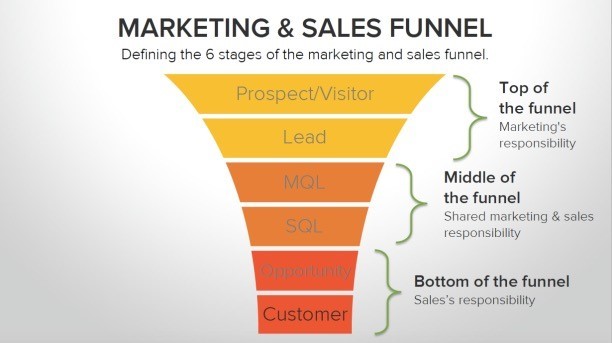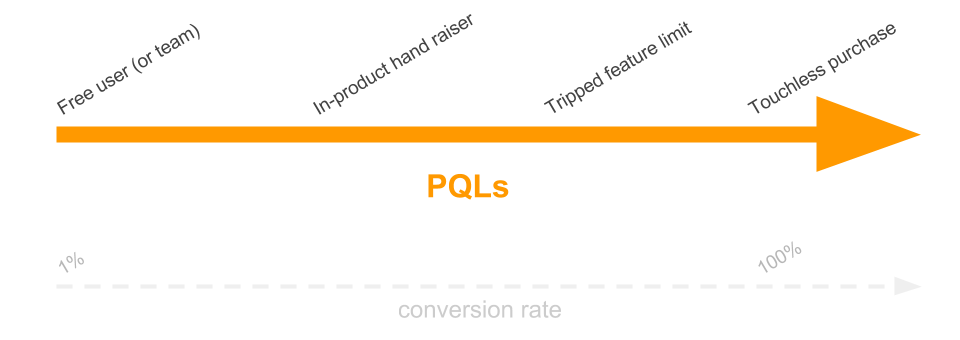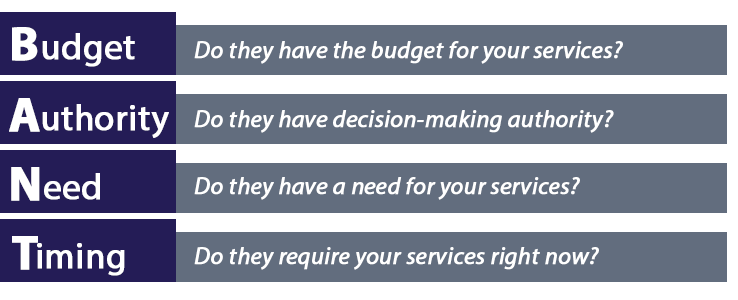Over the past couple of years, inbound marketing teams at SaaS companies have started buzzing about a new concept – the product qualified lead (PQL) over using market qualified leads (MQL)
In fact, it’s likely that many SaaS companies have been leveraging the potential of product qualified leads for a lot longer, but have been keeping the concept close to their chests as it ensures a serious competitive advantage over rivals.
How serious? Well, some research suggests that product qualified leads convert ten times more revenue than marketing qualified leads (MQLs).

(Image source: medium.com)
Ten times! That’s huge, and if you’ve got a SaaS product, we’re sure you’d like to see a piece of that action.
So let’s answer an important question…
What Is a Product Qualified Lead?
PQLs are potential customers (i.e. leads) who have been using a version of your SaaS product (usually as part of a free trial or freemium experience) and have taken some sort of action that indicates that they are highly likely to convert into a paying customer.
These actions – or “triggers” – might be the number of features used, the number of clicks, the time spent in the application, the number of referrals the lead has made, or any other factor.
For example, a company that provides a video-making SaaS platform might know that if a free-trial user makes three promo vids, the likelihood of conversion is high, and so the user is identified as a product qualified lead and the sales team is notified.
Of course, each product will have a different set of PQL criteria, because each product will measure engagement differently. But, PQLs provide key metrics for SaaS inbound marketing teams to focus on, for product qualified leads display the behaviours of those who are most likely to convert.
Read How the Top Companies Chase and Close SaaS Sales Leads
What’s Wrong with the Old MQL Model?
Nothing, per se. The traditional inbound marketing sales funnel is tried and tested, and produces great results for thousands upon thousands of SaaS companies all over the globe.
It works by using content to attract potential customers to your website, and then more content to convert these visitors into MQLs, SQLs, opportunities and then customers.

(Image source: endocreative.com)
The MQL model works to identify buying intent based on what types of content each lead engages with.
If a visitor signs up to your email newsletter, it’s safe to assume that they are showing an interest in your content, though not necessarily that they are in any rush to buy. However, if they download an eBook or white paper from your site which explains a little more about the service or product that you’re offering, it can be deduced that they have moved a little further along the buyer’s journey and may possibly be considering a purchase. They are an MQL.
Sales qualified leads (SQLs) have engaged with even more content – perhaps they’ve downloaded a case study, or have made direct contact with the sales team and are involved in an email exchange.
Opportunities are those who the sales team are in contact with, and who can confirm are genuine potential customers.
This is inbound marketing – and it works. However, for SaaS companies, it misses a trick in the sense that it only accounts for content that leads engage with on their educational journey towards becoming a paying customer, and not their actual experience with the SaaS product itself.
As such, it should in no way be thought that the PQL concept should replace the inbound marketing sales funnel, but if you can build the product qualified lead concept into your growth model, you can improve your results dramatically.
How to Build Product Qualified Leads into Your Inbound Marketing Strategy
You can see how relying solely on the MQL model can very easily lead SaaS companies to miss out on highly-qualified leads. If you’re overlooking clear product usage signals that are determining which of your prospects are likely to buy – and are instead focussing entirely on what content they’re engaging with – it’s likely that you’ll be allocating some of your resources in the wrong direction and missing out on sales.
The great thing about focussing product qualified leads is that they have already used your product. They are already engaged with it, understand how it works, and will already be extracting value from it.
However, not every free trial user is a product qualified lead. Indeed, PQLs need to be carefully defined against unique engagement metrics that make up your product.
These will be different from company to company, and you will need to mine your user data to find out at what point users of the free-trial or freemium version of your product historically upgrade.
 (Image source: expand.openviewpartners.com)
(Image source: expand.openviewpartners.com)
When someone has been using the free trial for a certain amount of time, they are effectively “raising their hand” to suggest that they would be interested in continuing to use the product after the trial is over.
However, it’s not unusual for free trial usage to wane after a while. And so you need to set a limit that will clearly indicate that the prospect is not just a casual user trying out something new because it’s free, but are actually fully-engaged with the product and are therefore displaying behaviour that indicates that they are highly likely to buy.
In addition, in order to qualify as a product qualified lead, the prospect needs to be vetted against a set of criteria to confirm that they are indeed a good-fit for the product. This is often determined by the prospect’s BANT – Budget, Authority, Need and Timing.
 (Image source: business2community.com)
(Image source: business2community.com)
If your prospect meets the criteria you’ve set out, they are a fully-fledged product qualified lead, your sales team should be notified, and contact should be made. At this point you can start to send them additional content marketing materials that will help further educate the prospect along the path to purchase, and you should find that your conversion rates improve as you will be focussing on engaging those indicating high purchase intent.
Over to You
Building your inbound marketing strategy around product qualified leads in addition to your MQLs and SQLs is a great way to improve your bottom line.
If you need help developing an inbound marketing strategy that incorporates product qualified leads, get in touch with the growth experts here at Incisive Edge today.







